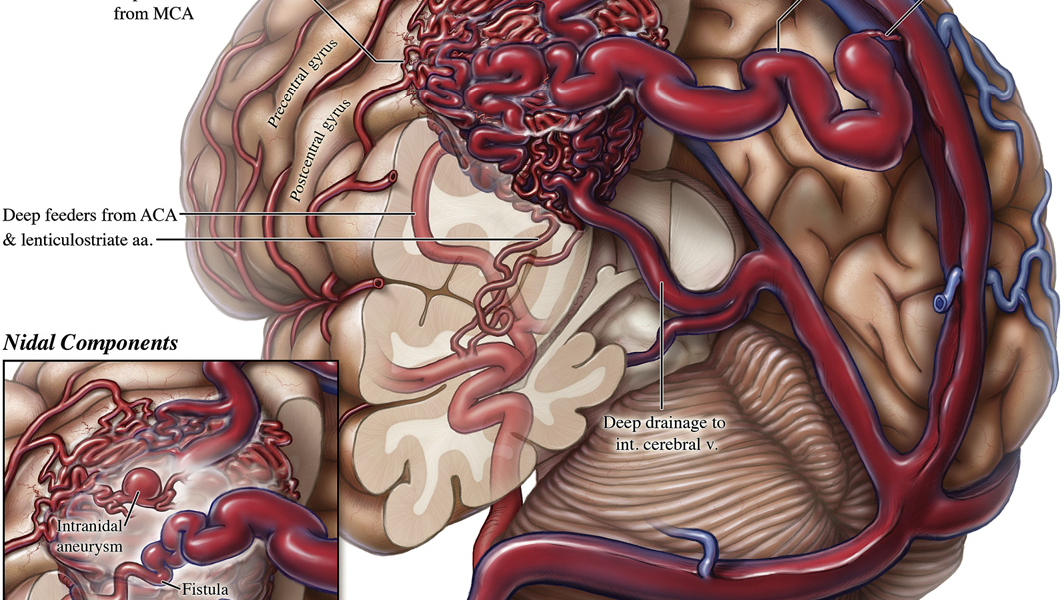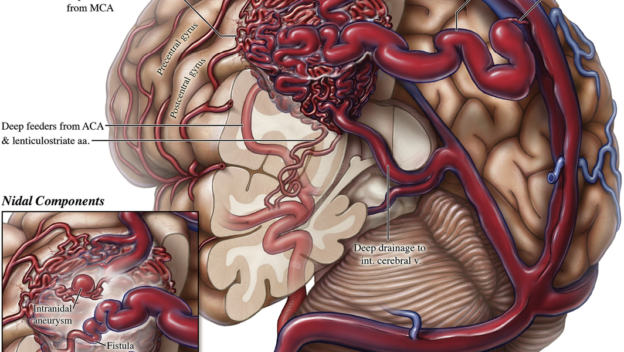The best Brain arteriovenous fistula or Malformations treatment in Guntur
What are the signs and symptoms of an arteriovenous fistula in the brain?
Best Brain arteriovenous fistula or malformation treatment: Patients in Guntur receiving brain fistula therapy describe a pulsatile tinnitus-like sensation in one ear that is heartbeat-accompanied.
Tinnitus occurs when a patient hears blood flow behind their ear, a characteristic whooshing sound synchronized with their heartbeat.
In the cavernous sinus that serves your eye, fistulas can form. As a result, the eye may become puffy, uncomfortable, and red.
The deadliest kind of fistula has no symptoms at all at first. They will bleed and alarm the patient and doctor at once. It interferes with the brain’s natural venous drainage, leading to a variety of neurological problems, such as seizures and strokes.
How is a brain arteriovenous fistula diagnosed?
Screening involves the MRA TOF, CTA, or MRA and detects only 60% of the cases. A catheter angiogram is the gold standard for diagnosing AFV.
A DAVF can result in both edema and actual bleeding, each of which happens in a different part of your brain’s venous system. CT head scans can detect both of these conditions.
An MRI is utilized to determine the shape and size of a dAVF. It aids in detecting micro-hemorrhages and the influence of any fistula-related abnormal blood vessels.
How is an arteriovenous fistula (AVF) treated?
The treatment options used at Dr. Rao’s Hospital in Guntur to treat arteriovenous fistula in the brain are as follows-
Endovascular embolization:
This is a catheter-based procedure that involves injecting a “glue-like” substance into the arteries feeding the DAVF or directly into the vein draining the DAVF (the Junction of the arteries and venous sinus that is the fistula site). This surgery aims to close the fistula as much as feasible.
Microsurgery:
Microsurgery can be done alone or in conjunction with endovascular embolization.
Microsurgery is a type of surgery that uses a microscope to clear up problems. It disconnects the faulty connection with a titanium clip or resection. It prevents blood from flowing unevenly from your artery to your vein. We repeated the angiography shortly afterward to check that the treatment was successful.
Stereotactic radiosurgery:
In life-threatening conditions, your doctor may recommend stereotactic radiosurgery. During a painless outpatient procedure, your doctor will place a stereotactic frame on your head. Music therapy makes the treatment go as smoothly as possible. According to TheTimes of India coverage.
After the head frame has been fitted, your doctor in Guntur will perform a head CT scan. The operation takes about 30 minutes to complete.
So, to treat brain arteriovenous fistulas, visit our best neurology hospital in Guntur, Dr. Rao’s Hospital. The solution to the problem of brain arteriovenous fistulas is just a visit away. In a recent mayoclinic.
Dr. Rao’s Contact Information:
- Phone: 9010056444, 9010057444
- Email: info@drraoshospitals.com
- Address: Old Bank St, GV Thota, beside AK Biryani Point, Guntur, Andhra Pradesh 522001
- Website: Dr. Rao’s Hospital


